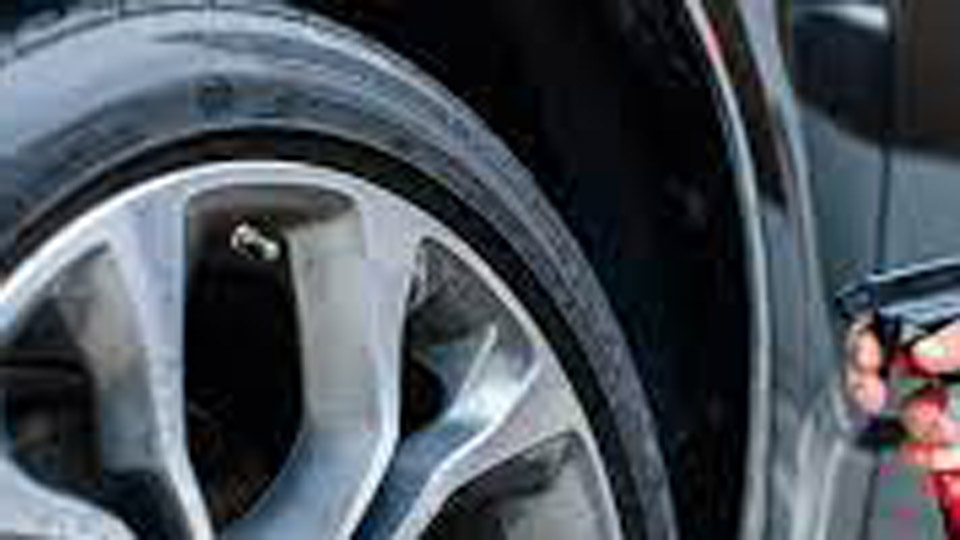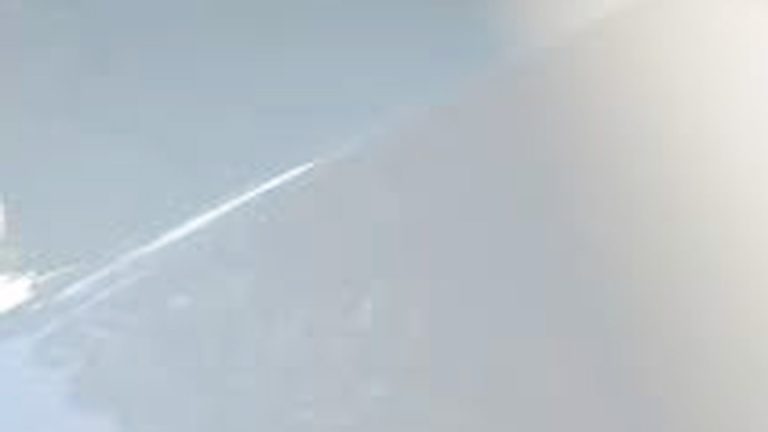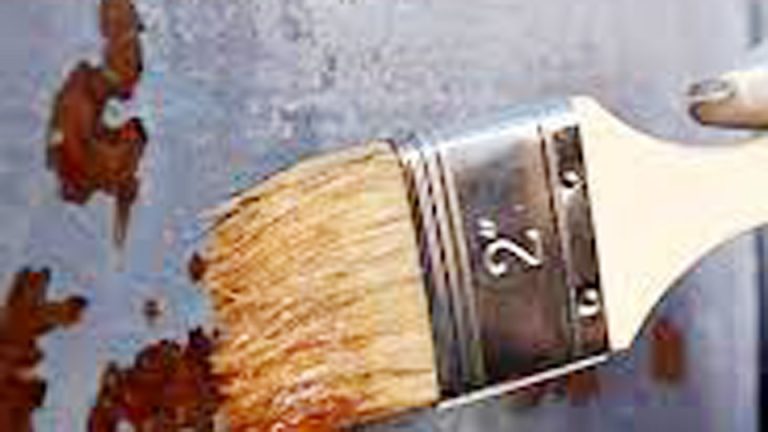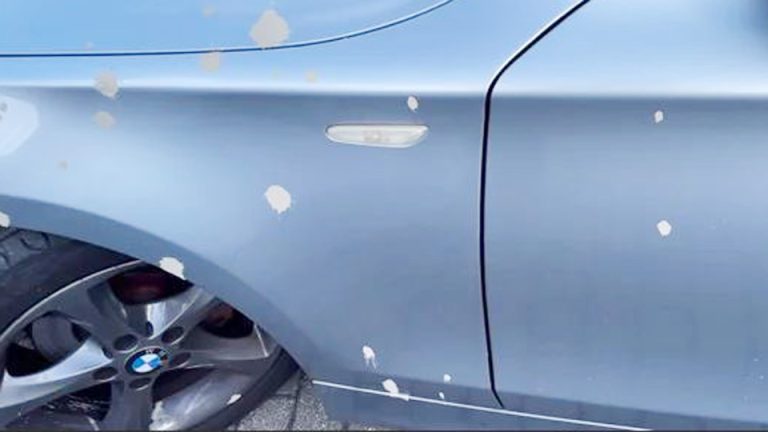One mistake I see car owners make all the time is accidentally getting tire shine on their car’s paint. It might not seem like a big deal at first, but that greasy residue can quickly attract dust, dull the finish, and even cause long-term damage to the clear coat if it’s not removed properly. If you’ve been searching How to Remove Tire Shine from Car Paint?, you’re already on the right track. As someone who’s dealt with this in the shop more times than I can count, I can tell you it’s not about scrubbing harder—it’s about using the right method and products to clean the surface without harming the paint.

Image by pdperformance
What Exactly Is Tire Shine and How Does It End Up on Your Paint?
Tire shine is that magic potion we slap on rubber to make tires look factory-fresh—think deep black, wet-look finishes that hide scuffs and dry rot. It’s usually a mix of solvents, silicones, or water-based polymers designed to penetrate and protect the tire’s sidewall from cracking under UV rays and road grime. Brands like Meguiar’s Endurance or Armor All Extreme are staples in the US, available at any AutoZone or Walmart for around $10 a bottle.
It’s not meant for paint. Those carriers—oils, waxes, or sprays—can sling off during application, especially if you’re using an aerosol can in a breeze or on a lifted truck where the tires are at bumper height. I’ve had it happen mid-job on a Jeep Wrangler; one quick spray and suddenly the fender’s got a streaky haze that won’t budge with a wash. Common culprits? Windy days, overzealous applicators, or even kids grabbing the bottle for “fun.” It’s not a spare part like brakes or filters, but treating it like a contaminant is key to maintaining your paint’s integrity, which ties right into overall vehicle upkeep.
The stuff does its job on tires by sealing out moisture and ozone, boosting that showroom gleam without frequent reapplication. But on paint? It leaves a film that attracts dust, repels wax, and can yellow under the sun. If you’re a DIYer like me, understanding this helps you pick the right shine product—water-based ones like Chemical Guys VRP are less sling-prone than oil-heavy formulas from Eagle One.
Spotting the Signs: How to Tell If Tire Shine Has Hit Your Car’s Paint
You might think it’s just dirt, but nah—tire shine leaves telltale clues. Look for a slick, oily residue that smears when you rub it with a microfiber cloth but doesn’t come off easily. On lighter colors like white or silver, it shows as dark streaks or spots; on blacks, it’s a dull, hazy patch that water beads up on weirdly. I’ve wiped down countless cars where owners swear it’s clean, only to reveal the shine under a clay bar glide.
Common problems pop up fast: within days, it can bond to the clear coat, making future polishes ineffective. Signs of failure? Streaking that worsens with rain, or a tacky feel that pulls lint from shop rags. If ignored, it leads to oxidation—I’ve fixed a ’98 Camry where overspray caused pitting, turning a $20 cleanup into $150 in compounds.
Why spot it early? Paint is your car’s skin—protect it for longevity. For students or pros, this is basic diagnostics: inspect after any tire work. Use a flashlight at an angle; the residue reflects differently than clean paint.
When and Why You Need to Remove Tire Shine from Your Car Paint Right Away
Don’t wait—act within 24-48 hours if possible. Fresh overspray lifts easier before it cures, preserving your paint’s UV protection and gloss. Replacement? Well, it’s not like swapping a battery, but neglected shine can force a full paint respray down the line, costing $500-$2000 depending on the panel.
Why bother? Safety-wise, smeared vision from a foggy windshield (yeah, it can splash there too) is no joke. Performance? Clean paint reduces drag from buildup, though that’s minor. Cost and reliability? A quick fix beats body shop bills, and it keeps your clear coat from delaminating, which I’ve seen on high-mileage Hondas exposed to harsh chemicals.
Replacement timing: Immediately after application, or if you notice during a wash. For fleet pros or daily drivers, make it routine post-tire service. In the US, with our salty winters, untreated residue accelerates rust on underbodies.
DIY vs. Professional Options: Weighing Your Removal Choices
Tackling tire shine removal yourself is empowering, like changing your own oil—satisfying and wallet-friendly. Pros handle it if it’s widespread or on a luxury finish, but for most, garage time wins. OEM vs. aftermarket? Think of it as factory paint care (gentle, pricey) versus aftermarket cleaners (aggressive, affordable).
DIY shines for control: I’ve removed it from my Subaru Outback using household stuff, no shop needed. Pros? They use steam cleaners or polishers for flawless results, ideal for exotics. Cost: DIY under $50 in supplies; pro $100-300.
| Method | Pros | Cons | Best For | Cost Estimate (US Market) |
|---|---|---|---|---|
| DIY Soap & Water | Cheap, no harsh chems; safe for all paints | May need multiple passes; labor-intensive | Light overspray on daily drivers | $5-10 (dish soap + microfiber) |
| Aftermarket Cleaners (e.g., Turtle Wax Bug & Tar) | Fast-acting; cuts silicone easily | Can strip wax if overused; fumes | Moderate residue on trucks/SUVs | $8-15 per bottle |
| Professional Detailing | Expert tools; no risk to clear coat | Expensive; wait time | Heavy buildup or vintage cars | $150+ per session |
| Clay Bar + Polish (OEM-like) | Deep clean; restores shine | Time-consuming; requires skill | Pre-wax prep on sedans | $20-40 (kit from Meguiar’s) |
OEM options mimic factory methods—gentle, like Ford’s approved cleaners. Aftermarket? Brands like Mothers or 3M offer solvents tailored for US vehicles, compatible with everything from Toyotas to Chevys. Availability? Hit up O’Reilly Auto Parts or Amazon; fakes are rife, so check holograms on bottles.
Step-by-Step Guide: Removing Tire Shine with Everyday Tools
Alright, grab your gloves—we’re doing this like a real garage session. I’ve pulled this off on everything from a rusty Chevy Silverado to a pristine Tesla Model 3. Safety first: Work in shade, wear eye protection, and ventilate if using solvents. Tools? Bucket, microfiber towels, clay bar kit ($15 at Advance Auto), and a pH-neutral car soap like Dawn or Meguiar’s Gold Class.
Prep Your Workspace and Vehicle
Park on a clean driveway, engine off. Rinse the car with a hose to knock off loose dirt—I’ve skipped this and ended up scratching paint with grit. Mask off trim with painter’s tape if the overspray’s near edges. Why? Protects rubber seals, which tire shine can also gum up.
Personal tip: On a hot Florida day, I once hosed a customer’s Mustang too aggressively, pushing shine into cracks. Lesson learned—gentle pressure only.
Method 1: The Gentle Soap Wash for Fresh Overspray
Start simple. Mix warm water with dish soap (1:10 ratio)—cuts grease without stripping wax. Soak a microfiber in the mix, wring it out, and gently agitate the spot in circles. Let it sit 2-3 minutes; the soap emulsifies the shine.
Rinse and dry immediately with a blower or chamois. Repeat if needed. I’ve fixed 80% of cases this way on Fords and Dodges—quick, under 30 minutes. Common mistake? Scrubbing hard; use elbow grease lightly to avoid swirls.
Pros: Eco-friendly, no residue. Cons: Ineffective on cured shine. For US trucks with bed liners, it’s perfect for fender flares.
Method 2: Using Aftermarket Degreasers for Stubborn Spots
If soap fails, grab a dedicated remover like Goo Gone Automotive or Stoner Car Care Tarminator—$10 at NAPA, safe for most paints. Spray on, wait 1-2 minutes (test on a hidden spot first!), then wipe with a damp cloth.
For silicone-heavy shines (common in Armor All), follow with isopropyl alcohol (70%, $5 at pharmacies) on a cotton pad. Buff dry. I once saved a buddy’s GMC Sierra this way—overspray from a detailer had baked in; alcohol dissolved it without haze.
Installation tips? No, removal tips: Work small sections, rinse between passes. Maintenance: Re-wax post-clean with Collinite 845 ($20), a fleet favorite for durability.
Mistake alert: Over-soaking can dull matte finishes on Jeeps—dilute and test.
Method 3: Clay Bar and Polish for Deep-Clean Results
For bonded residue, clay up. Lubricate with soapy water, glide the clay over the area—it shears off contaminants like a magnet. Follow with a cutting polish like Meguiar’s M105 ($15) on a foam pad by hand or DA polisher.
I’ve done this on a classic Mustang after a tire job gone wrong; the owner thought the paint was toast, but it came back glossy. Pros: Restores like new. Cons: Learning curve—too much pressure scratches.
Vehicle compatibility: Works on all US models, but skip on soft-touch interiors. Tools: $30 clay kit from Chemical Guys.
Advanced: Professional-Grade Steam or Chemical Strippers
If DIY flops, steam clean—hot vapor lifts shine without abrasion. Shops use it for $50 add-on. Or, for pros, acetone-based strippers (last resort, as they eat paint if undiluted).
From my shop days, we steamed a fleet of Ubers; saved hours versus sanding. But for you? Stick to DIY unless it’s a wrap or ceramic coat.
Common Mistakes to Avoid When Removing Tire Shine
I’ve botched a few myself early on. Biggest? Using household cleaners like WD-40—it’s oily and smears worse. Or claying dry; always lube to prevent marring.
Another: Ignoring the type of shine. Water-based (e.g., Black Magic) lifts with soap; solvent-based needs alcohol. On a rainy Seattle day, I once used water on oily residue—total fail, had to polish later.
Safety: No power washing close-up; it embeds grit. For lifted vehicles like Rams, use extension ladders carefully. And always decontaminate post-removal—I’ve seen shine return if not fully gone.
OEM vs. Aftermarket Tire Shine Products: Preventing Future Messes
To avoid repeats, choose wisely. OEM? Dealer-specific, like GM’s ACDelco shine—pricier ($15-20), but formulated for their paints, less sling. Aftermarket dominates: Meguiar’s ($12) for water-based ease, or 303 Products ($10) for UV protection without oils.
| Brand | Type | Price (US) | Pros | Cons | Compatibility |
|---|---|---|---|---|---|
| Meguiar’s Endurance | Gel (OEM-like) | $12 | No overspray; long-lasting | Thicker application | All vehicles, esp. sedans |
| Armor All Extreme | Aerosol (Aftermarket) | $8 | Quick spray; deep shine | Sling-prone; oily residue | Trucks/SUVs, but risky near paint |
| Chemical Guys VRP | Dressing (Aftermarket) | $15 | Water-based; safe | Needs frequent reapply | Eco-conscious owners, imports |
| Eagle One All Wheel | Foam (Aftermarket) | $7 | Budget; matte finish | Can streak if windy | Economy cars like Civics |
Pros of aftermarket: Variety, cheaper, widely available at Pep Boys. Cons: Quality varies—fakes flood eBay, lacking real silicones. Spot fakes: Check for misspelled labels or missing batch codes; genuine ones have UV stamps.
Personal story: A customer brought in a fake bottle from a flea market—thinned-out junk that wrecked his Tahoe’s paint. Always buy from trusted spots.
Tools and Supplies You’ll Need for Safe Removal
No fancy garage? Start basic: Two buckets (one soapy, one rinse), $5 each at Home Depot. Microfibers ($10 pack from Amazon), hose with nozzle, and gloves.
For upgrades: Clay bar ($15), dual-action polisher ($50 entry-level from Harbor Freight—I’ve used one for years), and a leaf blower for drying ($30).
Safety practices: Eye protection (ANSI-rated, $5), work gloves to avoid chemical burns. In humid US spots like Florida, dry thoroughly to prevent water spots.
Maintenance best practices: After removal, apply sealant quarterly. I’ve taught apprentices this—prevents recurrence on shop loaners.
Real Workshop Anecdotes: Lessons from the Trenches
Back in ’18, a harried mom pulled up with her minivan—tire shine from a DIY job had splattered the doors. “Is it ruined?” she asked, panicking. We soaped it off in 20 minutes; she drove away relieved, tipping me for the calm walkthrough. Shows how common this is for families with vans like the Odyssey.
Another time, a hot-rodder with a customized Charger ignored my warning on aerosol shine—next visit, full panels hazy. Cost him $400 in pro detailing. Moral: Prevention beats cure.
Or that snowy Michigan winter: Salt mixed with shine residue rusted a customer’s undercarriage trim. We clayed and sealed it—saved the frame. These stories hammer home: Act fast, know your products.
Identifying Genuine Cleaning Products vs. Fakes in the US Market
Fakes plague auto aisles—cheap imports mimicking 3M or Turtle Wax. Genuine? Holographic seals, exact weights (e.g., 16 oz bottle feels full), and US-made stamps. Buy from chains like AutoZone; avoid unverified online sellers.
Tip: Sniff test—real degreasers have consistent citrus scent, not chemical burn. I’ve tossed suspect bottles from bulk buys; better safe.
For vehicle compatibility, check labels—most work on US domestics (Fords, GMs) and imports (Nissans, VWs). Prices fluctuate; post-pandemic, expect 10-20% hikes, but sales at Valvoline keep it affordable.
Prevention Tips: Keeping Tire Shine Off Your Paint from the Start
Shield up! Use cardboard or plastic sheeting ($5 at dollar stores) around fenders during application. Apply shine with a brush or foam applicator, not spray—I’ve switched to this on all jobs, zero overspray.
Position the car strategically: Back it into a bay to shield the front. For pros, detail in enclosed spaces. And choose sling-free formulas; 303’s my go-to for clients’ Priuses.
Maintenance: Wipe tires weekly with a damp rag post-shine to even it out. Fuel efficiency tie-in? Clean tires roll smoother, but that’s minor—focus on aesthetics.
Pros and Cons of Different Removal Methods in Practice
We’ve covered basics, but let’s break it down. Soap method: Pros—accessible, no tools; cons—ineffective on thick layers, time-suck for big areas like an F-350 bed.
Degreasers: Pros—efficient for silicone; cons—potential wax strip, not for fresh paint. Clay: Pros—thorough; cons—physical effort, risk of holograms if unskilled.
In my experience, combo approaches win: Soap first, then clay. For US muscle cars with clear bras, degrease gently.
Integrating Removal into Broader Car Maintenance Routines
Tie this into your schedule: Post-tire rotation (every 5k miles), inspect for shine. It pairs with undercarriage washes in rust-belt states. I’ve bundled it into $99 detail packages—clients love the proactive vibe.
For DIY mechanics, it’s a gateway skill: Builds confidence for bigger jobs like headlight restoration.
Conclusion: Key Takeaways for Spotless Paint and Smarter Choices
Whew, we’ve covered the gamut on how to remove tire shine from car paint—from spotting the mess to wielding the right tools without wrecking your ride. The big wins? Act quick with gentle methods, pick quality products to prevent repeats, and always test small. This isn’t just cleanup; it’s investing in your car’s longevity, saving you from those gut-wrenching body shop quotes.
To make smarter decisions, compare brands at local stores, read labels for your vehicle’s finish, and prioritize water-based shines for low-drama apps. Whether you’re a weekend warrior on a Civic or a pro fleet manager, these steps keep things reliable and looking mean on the highway.
Final pro tip: After any removal, hit the spot with a quick detailer spray like Quick Wax—locks in protection and makes the next wash a breeze. Drive safe out there.
FAQ
How long does tire shine take to damage car paint if left untreated?
It varies, but silicone-based shines can start etching clear coat in 1-2 weeks under sun exposure. Water-based? Less aggressive, but still haze up in a month. I’ve seen minor pitting after a rainy week on untreated spots—rinse ASAP.
Can I use WD-40 to remove tire shine from paint?
Sure, in a pinch—it cuts grease well—but it’s oily, so follow with soap and wax. Not ideal long-term; I’ve used it on rusty tools, but for paint, stick to auto-specific removers to avoid residue buildup.
What’s the best tire shine product that won’t splash onto paint?
Go for brush-on gels like Meguiar’s Hot Shine—minimal overspray, lasts 2-4 weeks. For aerosols, 303 Aerospace Protectant is sling-resistant. In US shops, it’s a bestseller for detailers avoiding callbacks.
Does removing tire shine affect my car’s warranty?
Nah, if done gently—it’s maintenance, not alteration. But harsh chemicals on new rides like a 2024 Tacoma could void paint coverage if it strips factory coatings. Check your manual; I’ve advised owners to document DIY cleans.
How often should I check for tire shine overspray on my vehicle?
After every tire dressing or rotation—monthly for heavy users. In detail bays, we inspect bumpers weekly. Proactive checks catch it fresh, saving elbow grease.



